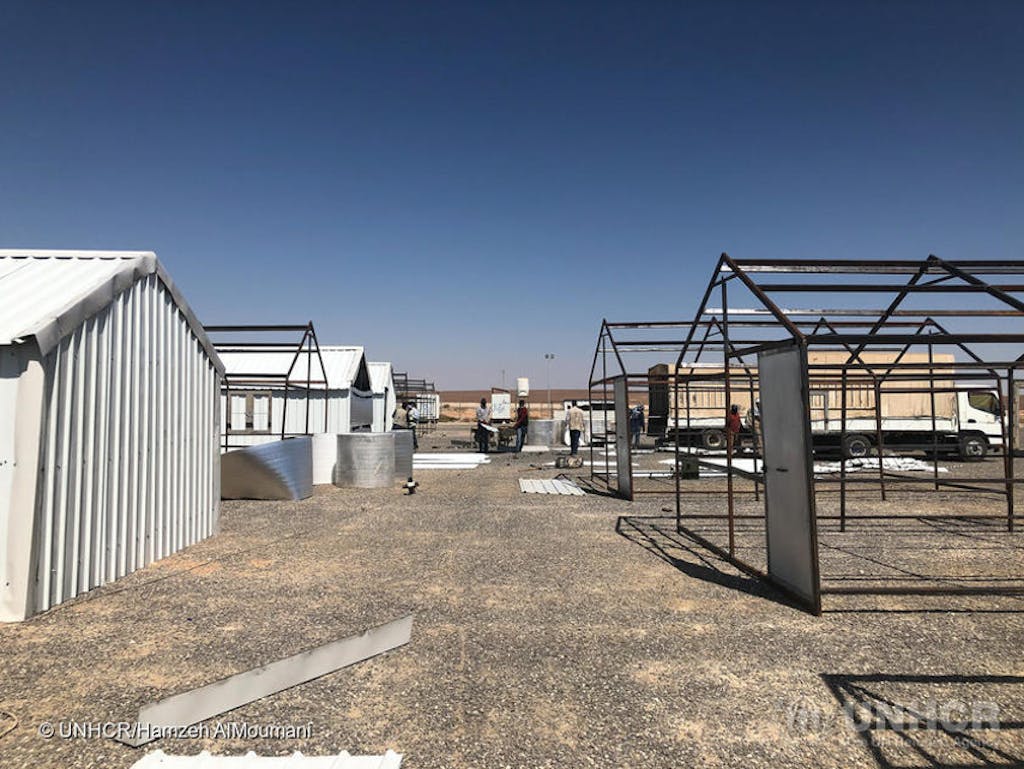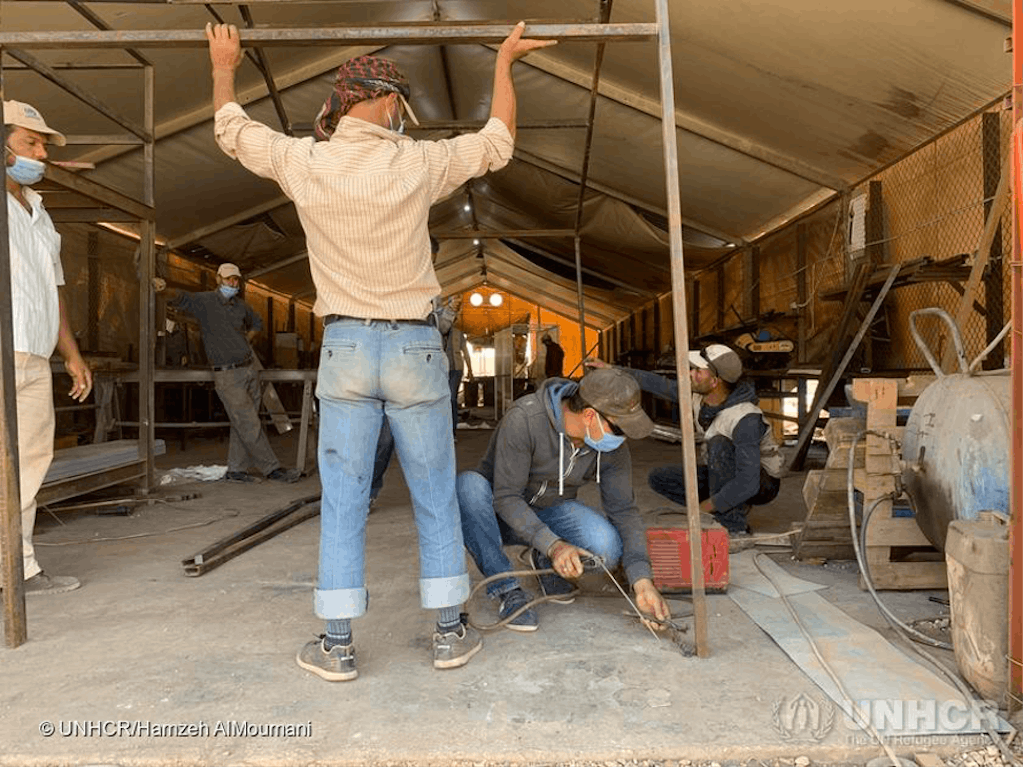With the support of the COVID-19 Solidarity Response Fund, Syrian refugee construction workers at the UN Refugee Agency’s Azraq camp in Jordan have built a COVID-19 isolation camp to help stem the virus’s transmission.
When the first case of COVID-19 was confirmed in Jordan’s Azraq camp in September 2020, Firas, a Syrian refugee and construction worker, was already standing by and ready to help. Since the beginning of the pandemic, he has been working with 70 other refugees to build a quarantine site to accommodate the camp’s inhabitants should they test positive for coronavirus.
“The camp is not like a city,” said Firas. “Caravans [small shelters] are close to one another and maintaining social distancing is harder than you think. If someone was infected in the camp, then transmission is much easier to happen. The quarantine area made it much safer for us.”
The Azraq camp was established in 2014 as a temporary home, housing 40,000 refugees — of whom almost 60% are children — after the much larger Zaatari camp had reached its capacity. Refugees in the camp live in small shelters, and a family of seven will often share one caravan, making social distancing difficult.
At the beginning of the pandemic, before any positive COVID-19 cases were recorded in the camp, the quarantine area also played an important role in helping refugees to self-isolate when they returned home from working in other areas in Jordan. To prevent potentially spreading the virus to the rest of the camp’s population, refugees were required to spend 14 days in quarantine upon their return. The area was useful in allowing them to isolate comfortably with more space than they would normally have.
With support from the COVID-19 Solidarity Response Fund, UNHCR, the UN Refugee Agency, was able to start building the quarantine area in the camp as early as March. Working with partners such as the Norwegian Refugee Council, this was one of the first steps they implemented to contain the spread of the virus.

In Syria, Firas used to work in construction and holds a diploma from the University of Aleppo. When the conflict arrived in his hometown of Hama in 2016, he was forced to flee, along with his parents and children, fearing for their lives. COVID-19 dramatically increased the challenges of being a refugee in Jordan, especially while living in a camp.
“The past six months were very hard,” Firas said. “I have family members outside of the camp, and they were telling me how easy it is to be in a refugee camp, but the truth is you are risking your life each time you leave the house. It was also very heavy psychologically as well; being in a caravan all the time and worrying about my parents was very tiring.”

Despite the challenges, working on the quarantine site has provided some relief for Firas. He and his team recently expanded the site from an initial 50 shelters to 100, increasing its capacity to serve up to 500 individuals. Thus far, the camp has had 573 cases of the virus, only three of which are currently active. In addition to the health benefits for the wider camp population, the construction project has provided economic benefits for refugees such as Firas.
“I have not worked for two years, so this was a great opportunity that got me and my family through COVID so far,” he said. “This job has been essential in covering my parents’ additional medical needs and cover the needs for my children.”
YOU CAN HELP
The world has yet to turn the page on COVID-19, a virus that is disproportionately affecting the most vulnerable among us. The COVID-19 Solidarity Response Fund continues to support efforts to fight the virus and protect the lives of refugees around the world. It is the fastest and most effective way for individuals, companies, and organizations to support the work of the World Health Organization (WHO) and its partners in battling the virus.
This piece was provided by UNHCR’s Hamzeh Almomani and has been edited and published with permission.



 View All Blog Posts
View All Blog Posts
